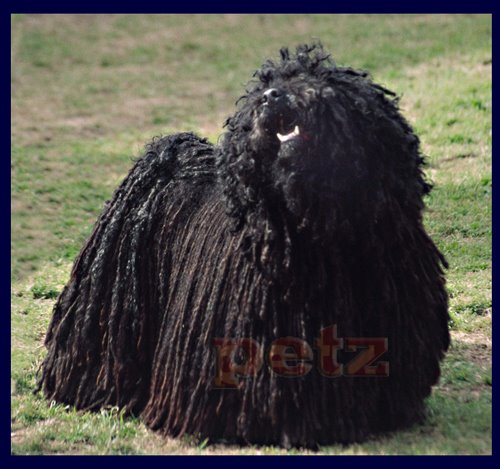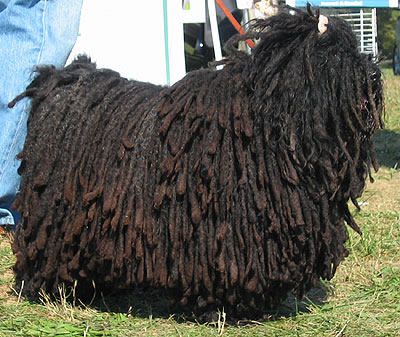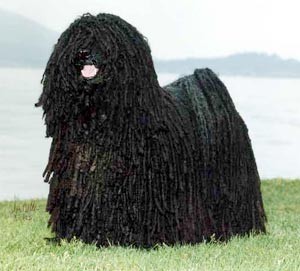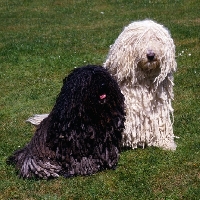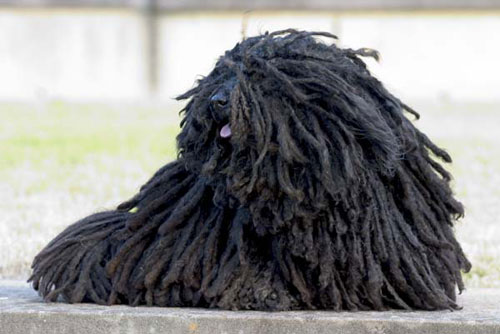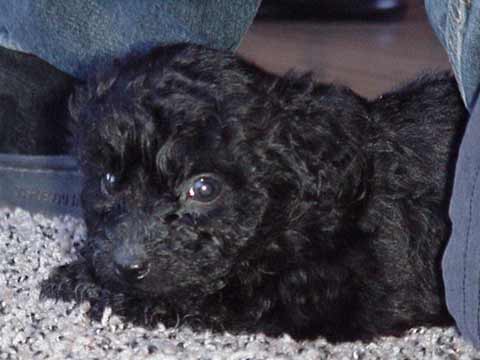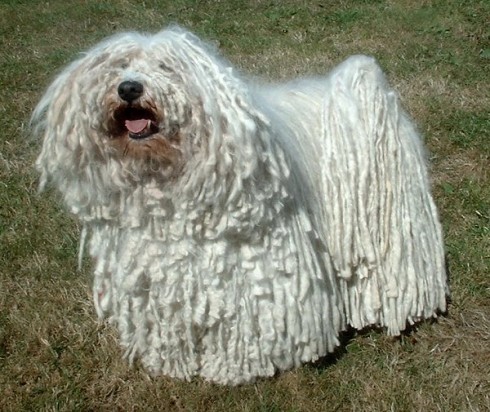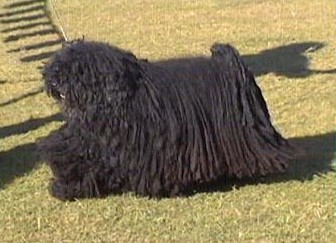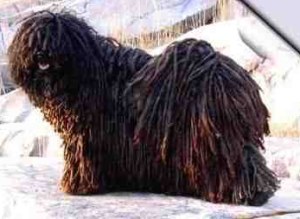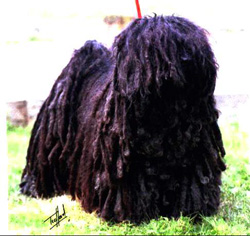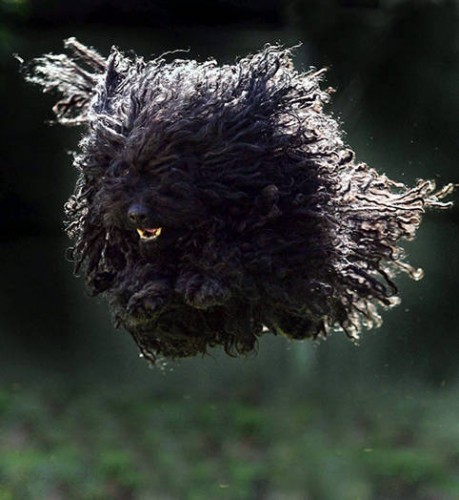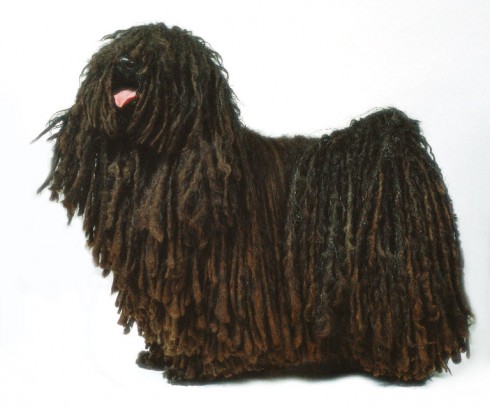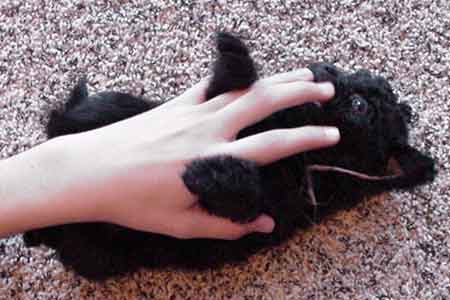Main Index
In Store
Our Web Store
Miniature Schnauzer Picture Gallery
Latest Dog Blogs
- What Are The Basic Commands To Train A Dog?
- PaySafe As The Most Popular Type Of Deposit
- Everything You Need To Know About Pet Sales
- Dogs Contribute To Our Physical And Mental Well Being
- How To Choose Where To Bet On Greyhounds In 2022
- Volunteer With Animals - How To Help Dogs Around The World
- Basic Understanding Of The House Edge
- Why You Should Get A Dog
- Top 20 Popular Dog Names Around The World
- Constipation in Dogs and How to Find Solutions
Hungarian Puli
Hungarian Puli Picture Gallery
Hungarian Puli Clubs/Associations
The Full Hungarian Puli Description
The Puli is a Hungarian herding dog with a corded coat. He has a lively and impish personality. They are medium sized, vigorous, alert, and active.
Did you know?
The Puli has been part of the lives of Hungarian shepherds for more than 1,000 years.
The first standard for the Puli was written in 1915 and, in 1924, the standard was approved by FCI (Federation Cynologique Internationale).
So you want to own a Puli?
The Puli's coat is unique. It is dense and profuse and either wavy or curly. If allowed to develop, the coat will form natural cords. If you let your Puli's coat develop cords, the dog does not require brushing, but must still be groomed. The coat really requires a great deal of work to maintain and it easily collects dirt, leaves, and anything else, which can be difficult to remove. Some coats require less time than others to care for, but it must be stressed this is a big job, which a Puli owner must be devoted to.
Bathing is required as the owner wishes, but a heavily coated Puli can take up to an hour to bathe and may take up to three days to air dry and six hours plus to dry with the use of a blow dryer.
The Puli is a sensitive, one person, or one family breed who makes an intensely devoted companion.
Indicative Breed Standard
General Appearance
Sturdy, muscular, wiry, with fine bone. Whole well covered with long (according to age), profuse corded coat. Long hair overshadows eyes like an umbrella. Viewed from side, trunk and limbs should present square figure.
Characteristics
Herding dog, medium-sized, nimble and extremely intelligent.
Temperament
Lively, wary of strangers, but not displaying nervousness or unprovoked aggression.
Head and Skull
Disregarding hair, head small and fine with slightly domed skull. From front it appears round, from side almost elliptical. Muzzle one-third length of head, with well defined stop, not snipey but bluntly rounded. Arches of eye socket well defined, nose relatively large and black, eye rims and flews black in all colours.
Eyes
Medium size, dark brown with lively expression.
Ears
Set slightly below level of skull, V-shaped, pendant, of medium size, covered with long hair. Length of ears about half length of head. Ears do not appear noticeable, even when alert.
Mouth
Roof uniformly dark or variegated with deep pigmented spots on dark base. Flews tight and black. Tongue bright red. Jaws and teeth strong with perfect scissor bite, i.e. upper teeth closely overlapping lower teeth and set square to the jaws.
Neck
Set at an angle of 45 degrees to horizontal, of medium length, tight skinned and muscular. When fully coated, neck appears to merge with body.
Forequarters
Shoulders well laid. Elbows tight. Forelegs straight and muscular, and viewed from any angle, vertical.
Body
Withers slightly higher than level of back, which is of medium length. Loin short and broad, belly slightly tucked up. Ribs deep, rib cage broadening from behind elbows and well sprung. Rump short and slightly sloping but this is not obvious because of tightly curled tail.
Hindquarters
Strong, and well muscled. Pelvis forming an angle of 90 degrees with thighbone. Well bent stifle. Hocks set fairly low. When viewed from the rear, the legs should be parallel, with feet turning neither in nor out. Wide pelvis desirable, especially in bitches.
Feet
Short, round, tight. Hindfeet slightly longer than forefeet. Nails strong, black or slate grey. Pads springy, dark grey in colour.
Tail
Medium length, curled tightly over rump-loin area; long hair of tail mixes indistinguishably with similar hair of rump so that tail does not appear separate.
Gait/Movement
Stride not far-reaching. Gallop short. Typical movement short- stepping, very quick, in harmony with lively disposition. Movement never heavy, lethargic or lumbering.
Coat
Correct proportion of top and undercoat creates, naturally, the desired cords. Matting and felting to be avoided, and a combed coat is as undesirable as a neglected one. Coat generally longest on hindquarters, shortest on head and feet. Some dogs will grow a floor-length coat.
Colour
Acceptable colours black, rusty-black, white and various shades of grey and apricot. Black sometimes appears weathered, rusty, or with slight intermingling of white hairs. Grey and apricot in all their shades may have an intermingling of black or white hairs, with or without black mask, ear tips and tail tip. The overall appearance of all variants must be that of a solid colour. A white spot on chest of not more than 5 cms (2 ins) is permissible. A few white hairs on feet also permissible. Body skin should be well pigmented and slate grey in colour, especially in blacks and greys.
Size
Height: dogs: 40-44 cms (16-171/2 ins); bitches: 37-41 cms (141/2-16 ins). Weight: dogs: 13-15 kgs (29-33 lbs); bitches: 10-13 kgs (22-281/2 lbs).
About Our Article Directory
- Article
- 27 November 2010
- 2 comments
Canis lupus familiaris
- Breed Article
- 29 May 2010
- No comments
Quick Search
Donate
Latest Dog Pods
- Tips on How to Stop Your Dog from Biting
- Beware - Not All Advertised Dog Rescues Really Are! How Can You Know The Truth?
- Helpful Tips For Dog Obedience Problems
- How to Keep Dogs From Eating Poop
- Dog Grooming Tips - A General Overview of the Very Basics of Dog Grooming
- Recognising Different Types of Dog Obedience Problems
- 5 Important Tips On Feeding A Puppy


